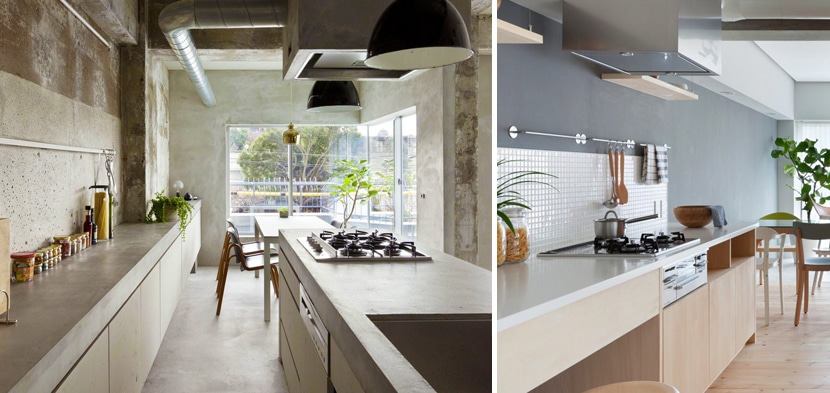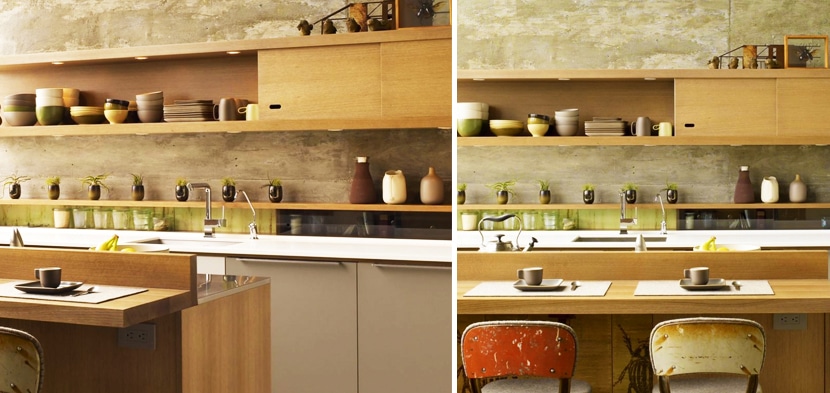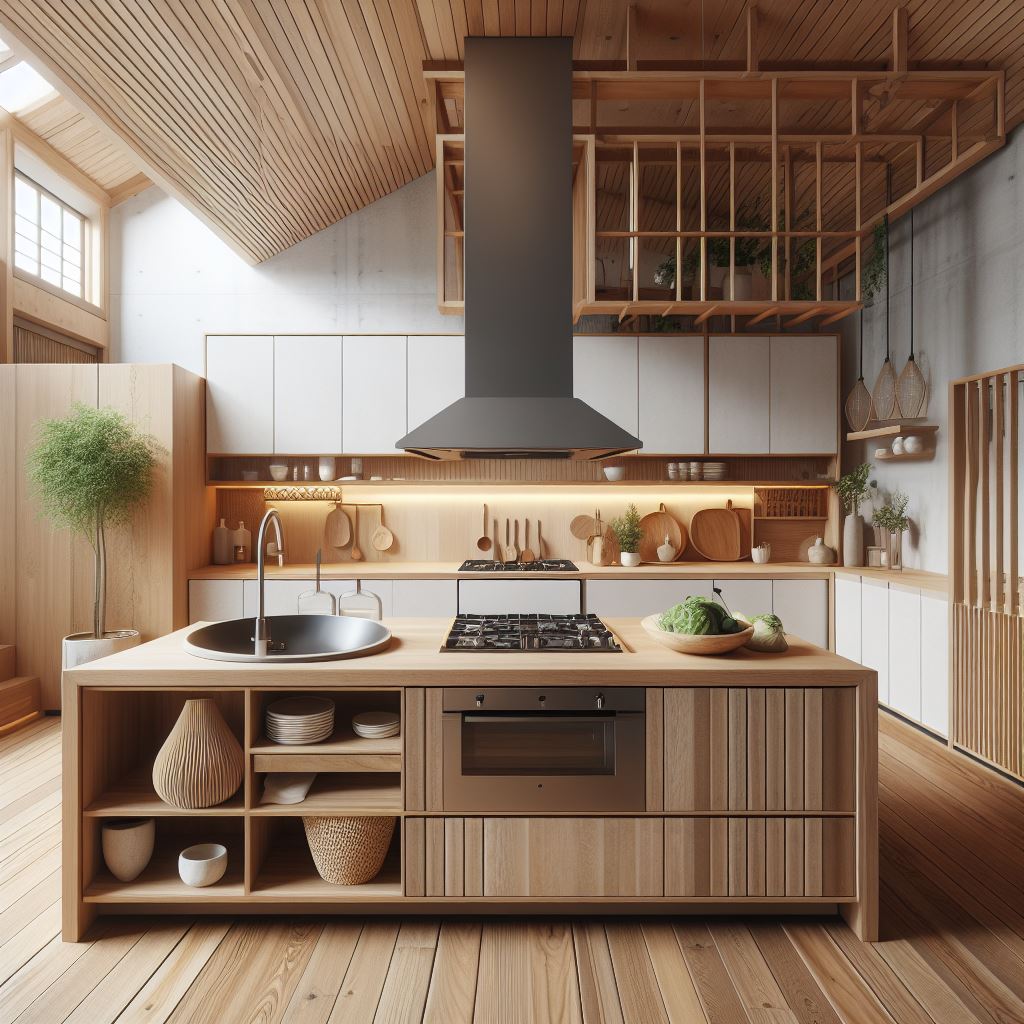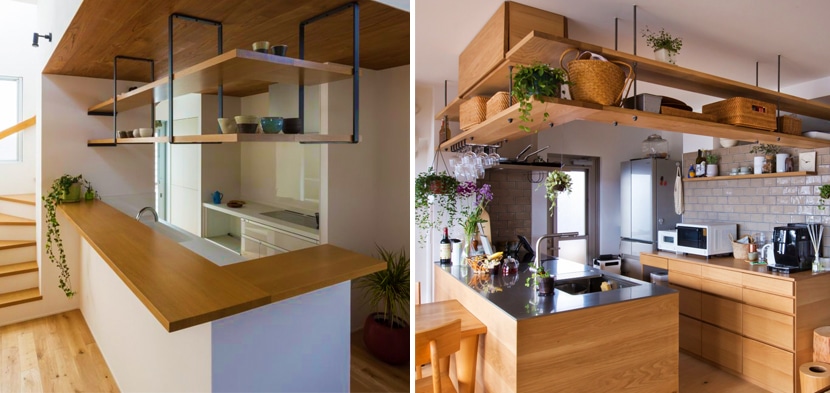When it comes to home design, the kitchen is often seen as the heart of the home—where families come together to cook, eat, and share stories. As someone who has always had a deep appreciation for minimalism and functionality, I found myself drawn to Japanese kitchen decor, which beautifully marries simplicity with elegance. In this article, I’ll walk you through the essentials of Japanese kitchen decor, sharing insights from my personal experience and practical tips to help you create your own serene kitchen space.
Understanding Japanese Kitchen Decor
Before diving into specifics, it’s essential to understand what Japanese kitchen decor truly embodies. At its core, it aims to create a space that is not only aesthetically pleasing but also functional, welcoming, and reflective of nature.
The Philosophy Behind Japanese Decor
Japanese decor is often centered around the principles of wabi-sabi, which celebrates imperfection and transience. This philosophy encourages the use of natural materials, simple lines, and a neutral color palette, promoting a sense of harmony and tranquility.
Core Elements of Japanese Kitchen Decor
- Natural Materials: Wood, stone, and bamboo are commonly used, emphasizing sustainability and a connection to nature.
- Neutral Colors: Soft whites, grays, and earthy tones create a calming atmosphere.
- Minimalism: Clutter-free spaces are vital; every item should have a purpose.
- Functional Design: Elements should not only look good but also serve a functional purpose.
Getting Started: Key Features of Japanese Kitchen Design
To create a Japanese-inspired kitchen, focus on these key features:

1. Space Planning
A well-planned kitchen maximizes efficiency and flow. Japanese kitchens often feature an open layout that promotes a sense of space and encourages interaction.
2. Choice of Colors
Neutral hues dominate Japanese kitchen decor. To incorporate this into your space, consider using shades like cream, beige, or light gray on walls and cabinetry. Accentuate with darker woods to add depth and contrast.

3. Natural Lighting
Natural light is essential. Large windows or sliding doors that lead to the outdoors can enhance the overall aesthetic and create a soothing atmosphere. If you lack natural light, consider adding soft, warm lighting fixtures.
4. Materials and Textures
Using a mix of textures can create visual interest while maintaining the natural feel. Opt for wooden cabinets, stone countertops, and bamboo accents.

| Material | Benefits | Considerations |
|---|---|---|
| Wood | Warmth, durability, natural feel | Requires care and maintenance |
| Stone | Elegance, functionality, heat resistance | Can be expensive; heavy |
| Bamboo | Sustainable, lightweight, versatile | Less durable than bamboo |
5. Appliances and Fixtures
In a Japanese kitchen, appliances should blend seamlessly with the design. Choose integrated appliances that do not disrupt the flow of your kitchen. Stainless steel and matte finishes often work well.

6. Open Shelving
Display your beautiful dishware and utensils on open shelves. This not only promotes a sense of accessibility but also creates a visually appealing and organized look.
7. Incorporating Nature
Bringing nature indoors is a crucial aspect of Japanese decor. Consider adding plants such as bonsai or herbs, which can also be functional in your cooking. A small herb garden on the windowsill is not only beautiful but incredibly practical!

Creating a Cohesive Look
Once you have the key features in mind, it’s time to create a cohesive look. Here are some tips to ensure everything flows harmoniously:
Choosing the Right Decor
Decor should be minimal yet impactful. Consider adding:
- Traditional Japanese Ceramics: Perfect for serving and display.
- Textiles: Use simple, natural fabrics for curtains or table linens.
- Artwork: Minimalist prints or calligraphy can add an artistic touch without overwhelming the space.

Furnishings and Seating
Choosing the right furnishings can greatly impact the overall vibe. Remember to keep it simple—low-profile tables and chairs enhance the minimalist aesthetic.
Countertops and Backsplash
Natural stone or wood countertops paired with a simple backsplash (like subway tiles) can contribute to a clean and sophisticated look.
Pros and Cons of Japanese Kitchen Decor
| Pros | Cons |
|---|---|
| Timeless elegance and simplicity | Minimalism may feel too stark for some |
| Emphasis on natural materials and sustainability | Maintenance may be required for wood finishes |
| Functional designs enhance efficiency | Can be costly depending on materials |
Common Mistakes to Avoid
When designing your Japanese kitchen, be mindful of these common pitfalls:
- Over-cluttering: Avoid excessive decor or numerous appliances; less is more.
- Ignoring Functionality: Ensure that all design choices serve a purpose, enhancing the kitchen’s usability.
- Neglecting Personal Touches: While minimalism is key, don’t forget to add elements that resonate with your personality.
Frequently Asked Questions (FAQs)
What are the best colors for Japanese kitchen decor?
The best colors are soft whites, grays, and earthy tones. These create a calming and harmonious atmosphere.
How can I incorporate Japanese decor into my kitchen without a full renovation?
You can start by adding small elements such as bamboo utensils, simple ceramics, and a few plants to create that Japanese aesthetic.
Are Japanese kitchens more expensive to design?
This largely depends on the materials chosen. While some natural materials can be pricey, focusing on DIY projects can help manage costs.
How important is natural light in Japanese kitchen decor?
Natural light is crucial as it enhances the openness and serenity that define Japanese decor. If possible, maximize natural light through windows or skylights.
Can I mix modern and Japanese decor styles?
Absolutely! Mixing modern elements with traditional Japanese decor can create a unique and personal space. Just ensure to maintain a balance to avoid visual clutter.
Conclusion
Japanese kitchen decor is a beautiful blend of functionality, simplicity, and tranquility. By embracing natural materials, neutral colors, and minimalist design, you can transform your kitchen into a serene haven. Whether you implement all the features or just a few, the essence of Japanese decor is about creating a more enjoyable cooking and dining experience. I hope this guide inspires you to explore this tranquil style and helps you craft a kitchen that reflects serenity and functionality!